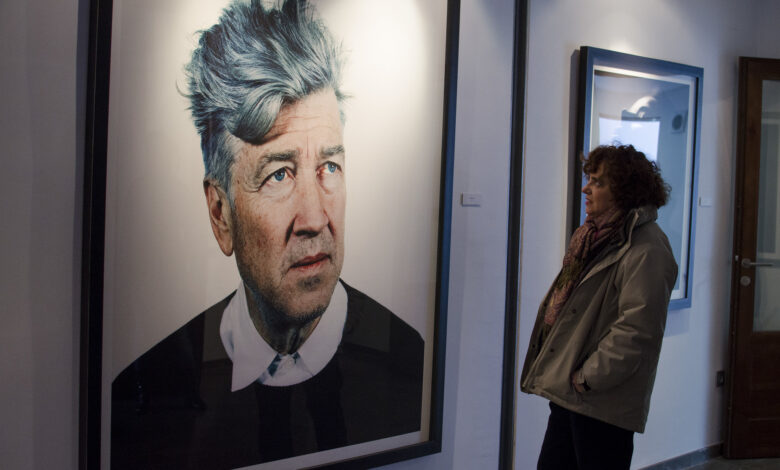The Intersection of Contemporary Portrait Photography and Julian Opie’s Artistic Vision

Contemporary portrait photography artists have brought about a permanent change in the portraiture segmentof contemporary photography with their creative methods and thought-provoking ideas.
The value of contemporary portrait photography lies in its ability to preserve personal and societal histories, convey individual and cultural identity, and foster artistic expression. It reflects and influences societal values, elicits emotions, and empowers both subjects and viewers through the lens of various and new ways.
Contemporary portrait photography artists and Julian Opie both emphasize stylization and minimalism. Both media frequently abstract and simplify how people are portrayed, emphasizing key characteristics while excluding unnecessary details to establish a unique visual language. In modern portrait photography, photographers can streamline and stylize their subjects by using methods like digital modification, shallow depth of field, and high-key lighting.
Julian Opie is well-known for his iconic and simplified portraits of humans, which are distinguished by strong lines, muted hues, and the reduction of face and physical features to their most essential components. This common preference for minimalism and abstraction draws attention to a modern creative movement that aims to capture the essence of portraiture.
Contemporary Portrait Photography Artists Redefining Visual Narratives
A few of contemporary portrait photography artists are well known for their unique aesthetics and powerful images.
Renowned for her legendary celebrity photos, Annie Leibovitz is still a major player in the industry, taking close-up and striking pictures. International praise has also been bestowed upon Platon for his poignant and forceful portraits, which frequently include prominent people and world leaders. Nadav Kander’s distinctive style of portraiture, which is characterized by an acute sense of mood and composition, has further cemented his standing as a reputable member of the modern photographic community.
Alec Soth’s works often explore the complexities of human interactions and social processes. Soth’s talent lies in capturing everyday scenarios and turning them into visually arresting narratives. Images from busy cityscapes to isolated rural areas convey universal stories through Soth’s lens.
Rineke Dijkstra’s well-known beach photos, which cover a number of years, show the significant changes people experience during their lives. Dijkstra’s workemphasizes the beauty inherent in imperfection and the passage of time, demonstrating her enthusiasm for depicting the fleeting essence of existence.
Cindy Sherman experiments with the ideas of identity and representation by adopting several personas and dressing differently. Her art challenges viewers’ preconceived notions about gender, beauty, and the freedom of speech.
Julian Opie’s Unique Artistic Approach
Julian Opie’s unique use of digital technology and simple forms sets his artistic approach apart from that of contemporary portrait photography artists.
Opie uses a stylized, minimalist style that is evocative of famous icons, distilling human beings to their most basic forms and bold lines. The distinction between traditional art and digital media is blurred by this departure from classic photographic realism and emphasis on graphical components, which results in a distinctive visual language.
Contemporary portrait photography artists are usually more concerned with getting accurate, lifelike images of their clients, frequently focusing on subtle facial expressions and surrounding situations.
In order to emphasize Julian Opie’s unique contributions to the area, this section examines his upbringing, influences, and most well-known works.
Opie’s artistic perspective is a captivating blend of pop art, conceptual art, minimalism, and other art styles. His work is characterized by its simplicity, strong lines, and reductionist approach to shape. Ordinary scenes often serve as inspiration for Opie, who transforms them into visually striking compositions that captivate audiences worldwide.
One of the things that makes Opie’s artwork unique is the way that he uses technology. Opie expertly combines intricate themes and patterns that he develops using computer programs into his paintings. His ability to unite traditional art with contemporary technologies has earned him recognition as a pioneer in the digital art movement.
Walking Figures Series: Opie’s most well-known body of work is without a doubt his “Walking Figures” series. These pieces evoke modernity and city living with their stylized, minimalist portrayals of people in motion. These fairly simple figurines, despite their obviously simple appearance, convey a wide range of emotions.
Landscapes: Opie’s cityscape paintings clearly reflect his fondness for metropolitan environments. These works frequently make use of his own visual language to convey the vibrancy and bustle of busy city life. Opie creates vivid, dramatic compositions out of cityscapes by utilizing geometric patterns and bold colors.
Opie’s artwork challenges accepted notions of what constitutes a decent portrait. His portraits often display his reductionist technique, which highlights important aspects while omitting little ones. The listener is urged to engage with the key ideas rather than getting mired in the details by purposely simplifying the text.
The Dynamic Nexus of Innovation in Artistic Expression
Anyone looking to investigate the meeting point of innovation and tradition in the always changing field of art may find inspiration in Julian Opie.The innovative visionaries who push the boundaries of the genre have a significant influence on the dynamic and always changing area of contemporary portrait photography.
Modern portrait photographers and artists like Julian Opie serve as examples of how contemporary art is evolving toward a dynamic nexus between old and new media. Opie, who is well-known for his unusually styled portraits that frequently feature digital components, combines modern digital aesthetics with traditional creative ideas. In a similar vein, modern portrait photographers embrace experimentation in both form and content as they push the limits of visual representation through the use of various media and technological breakthroughs.
The development of contemporary art appears to be defined by a fluidity that defies easy classifications, absorbing a wide range of inspirations and pushing the frontiers of creativity via an elegant fusion of traditional and modern methods. This progression signifies a more profound interaction with the always changing technology environment, inspiring artists to experiment in new ways.
Photo Credit: “Nadav Kander” by UGRmedia.



